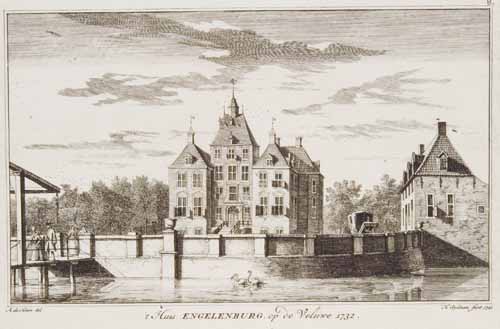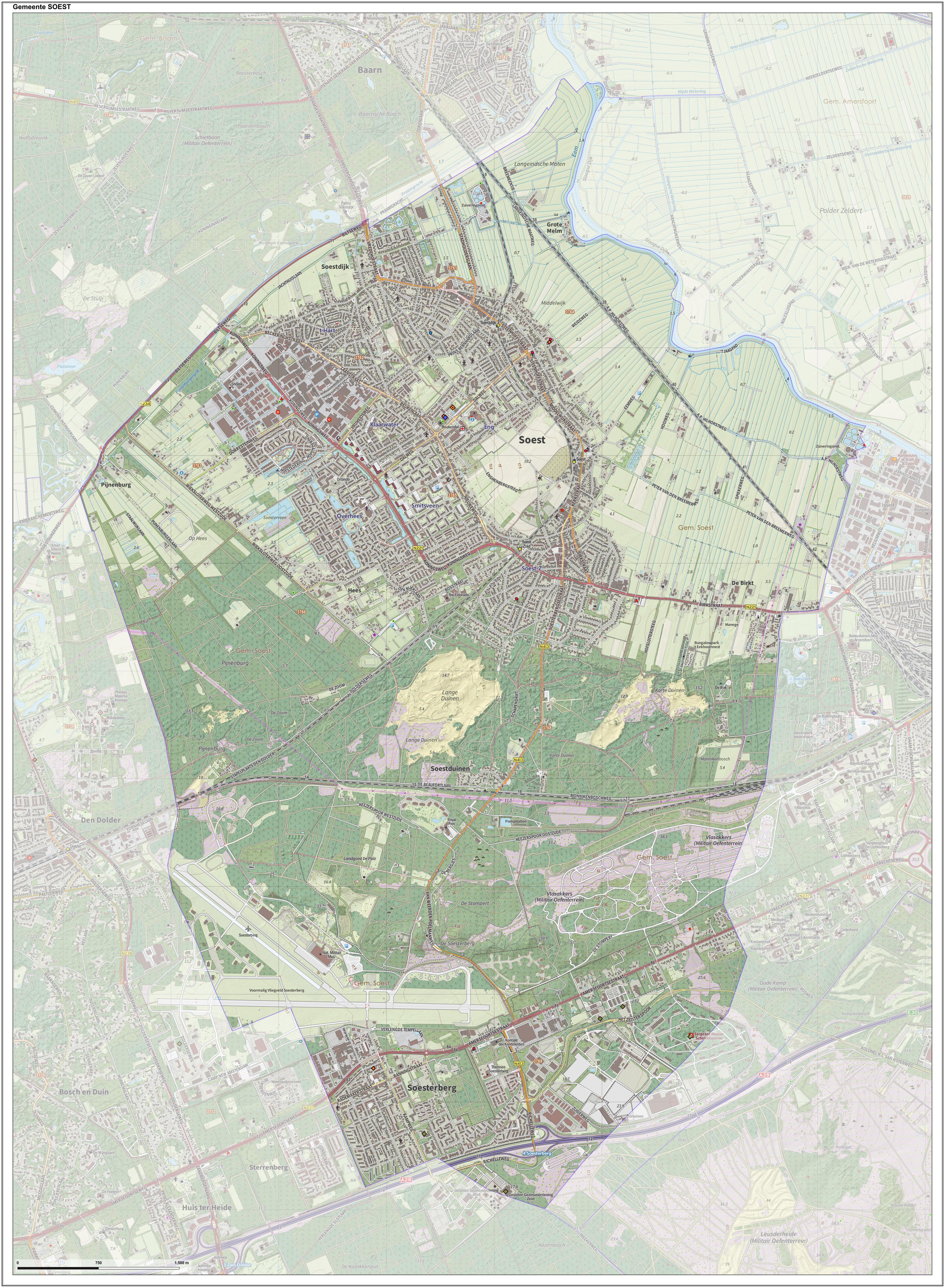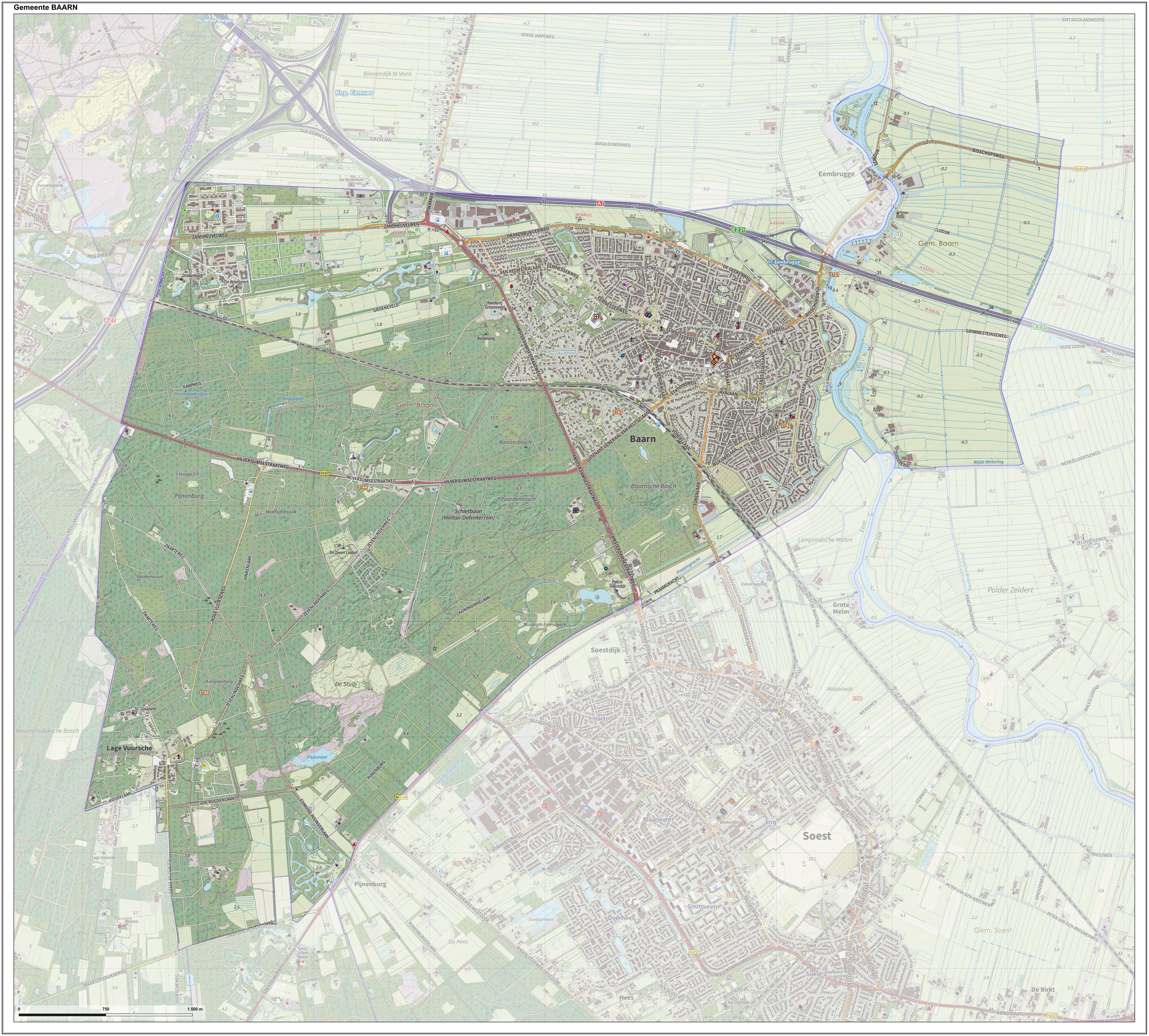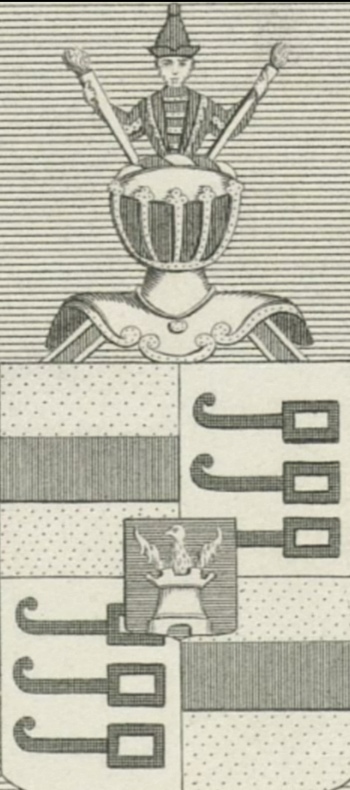|
Jacob Bicker (heer Van Engelenburg)
Jacob Bicker ( Amsterdam 1588–1647) was a Dutch patrician and merchant. Between 1643 and 1647 he was lord of Engelenburg and a director of the Oostzeevaart, handling Dutch trade with the Baltic Sea. Life Born in Amsterdam, he was a son of Gerrit Bicker and his wife Aleyd Andriesdr Boelens. He was a member of the Bicker family, a major trading family involved in the pelt trade with Muscovy and supplying ships and silver to Spain. Bicker married Christina de Graeff (1609–1679), daughter of Jacob Dircksz de Graeff and of Aaltje Boelens Loen. Jacob Bicker was one of the richest people of the Dutch Golden Age and was estimated to have a fortune of 220,000 guilders in 1631. In 1643 Jacob Bicker inherited the castle and estate of Engelenburg near Herwijnen from his relative Pieter Dircksz Graeff. In the 1640s Jacob Bicker belonged to the ''Bickerse ligue'', which opposed Stadholder Frederick Henry, Prince of Orange. Among his other posts, he held that of Schepen of Ams ... [...More Info...] [...Related Items...] OR: [Wikipedia] [Google] [Baidu] |
Stadtholder
In the Low Countries, ''stadtholder'' ( nl, stadhouder ) was an office of steward, designated a medieval official and then a national leader. The ''stadtholder'' was the replacement of the duke or count of a province during the Burgundian and Habsburg period (1384 – 1581/1795). The title was used for the official tasked with maintaining peace and provincial order in the early Dutch Republic and, at times, became ''de facto'' head of state of the Dutch Republic during the 16th to 18th centuries, which was an effectively hereditary role. For the last half century of its existence, it became an officially hereditary role under Prince William IV of Orange. His son, Prince William V, was the last ''stadtholder'' of the republic, whose own son, William I of the Netherlands, became the first sovereign king of the United Kingdom of the Netherlands. The title ''stadtholder'' is roughly comparable to the historical titles of Lord Protector in England, Statthalter in the Holy Roman Emp ... [...More Info...] [...Related Items...] OR: [Wikipedia] [Google] [Baidu] |
1647 Deaths
Events January–March * January 2 – Chinese bandit leader Zhang Xianzhong, who has ruled the Sichuan province since 1644, is killed at Xichong by a Qing archer after having been betrayed one of his officers, Liu Jinzhong. * January 7 – The Westminster Assembly begins debating the biblical proof texts, to support the new Confession of Faith. * January 16 – Citizens of Dublin declare their support for Rinuccini, and refuse to support the army of the Marquis of Ormond. * January 17 – Posten Norge was founded as Postvesenet. * January 20 – A small Qing force led by Li Chengdong captures Guangzhou and kills the Zhu Yuyue, the Shaowu Emperor of the Southern Ming dynasty in China. * February 5 – The Yongli era is proclaimed as Zhu Youlang is declared the Yongli Emperor of the Southern Ming. * February 24 – Thomas Bushell surrenders the Bristol Channel island of Lundy, the last remaining Royalist territory of England, to the Pa ... [...More Info...] [...Related Items...] OR: [Wikipedia] [Google] [Baidu] |
1588 Births
__NOTOC__ Events January–June * February – The Sinhalese abandon the siege of Colombo, capital of Portuguese Ceylon. * February 9 – The sudden death of Álvaro de Bazán, 1st Marquis of Santa Cruz, in the midst of preparations for the Spanish Armada, forces King Philip II of Spain to re-allocate the command of the fleet. * April 14 (April 4 Old Style) – Christian IV becomes king of Denmark–Norway, upon the death of his father, Frederick II. * May 12 – Day of the Barricades in Paris: Henry I, Duke of Guise seizes the city, forcing King Henry III to flee. * May 28 – The Spanish Armada, with 130 ships and 30,000 men, begins to set sail from the Tagus estuary, under the command of the Duke of Medina Sedonia and Juan Martínez de Recalde, heading for the English Channel (it will take until May 30 for all of the ships to leave port). July–December * July – King Henry III of France capitulates to the Duke of Guise, an ... [...More Info...] [...Related Items...] OR: [Wikipedia] [Google] [Baidu] |
17th-century Dutch People
The 17th century lasted from January 1, 1601 ( MDCI), to December 31, 1700 ( MDCC). It falls into the early modern period of Europe and in that continent (whose impact on the world was increasing) was characterized by the Baroque cultural movement, the latter part of the Spanish Golden Age, the Dutch Golden Age, the French ''Grand Siècle'' dominated by Louis XIV, the Scientific Revolution, the world's first public company and megacorporation known as the Dutch East India Company, and according to some historians, the General Crisis. From the mid-17th century, European politics were increasingly dominated by the Kingdom of France of Louis XIV, where royal power was solidified domestically in the civil war of the Fronde. The semi-feudal territorial French nobility was weakened and subjugated to the power of an absolute monarchy through the reinvention of the Palace of Versailles from a hunting lodge to a gilded prison, in which a greatly expanded royal court could be more easily k ... [...More Info...] [...Related Items...] OR: [Wikipedia] [Google] [Baidu] |
Kasteel De Hooge Vuursche (1901–2003), a Dutch journalist, diplomat, and colonial administrator
{{disambig ...
Kasteel is the Dutch language word for a castle or château. It can also refer to: * Sparta Stadion Het Kasteel, a football stadium * Joop Kasteel (born 1964), a Dutch mixed martial artist * Piet Kasteel Petrus Albertus "Piet" Kasteel (4 November 1901 – 13 December 2003) was a Dutch journalist, diplomat, and colonial administrator. He was parliamentary editor of ', and fled to England during World War II where he served for the Dutch government- ... [...More Info...] [...Related Items...] OR: [Wikipedia] [Google] [Baidu] |
Hollandsche Rading
Hollandsche Rading is a village in the Dutch province of Utrecht. It is a part of the municipality of De Bilt, and lies about 5 km south of Hilversum. Hollandsche Rading has a railway station on the route between Utrecht and Hilversum. The name means "Border of Holland": the village is located on the border between the provinces Utrecht and North Holland. History It was first mentioned in 1696 as Die Hollantse Radinge, but had been the border since 1352. The border is nowadays just to the north of the village. Up to 1930, Hollandsche Rading mainly consisted of heath. Yet, in 1885, a railway station was constructed in the hamlet. The houses were built for the people returning from the Dutch East Indies The Dutch East Indies, also known as the Netherlands East Indies ( nl, Nederlands(ch)-Indië; ), was a Dutch colony consisting of what is now Indonesia. It was formed from the nationalised trading posts of the Dutch East India Company, which .... In 1938, a church wa ... [...More Info...] [...Related Items...] OR: [Wikipedia] [Google] [Baidu] |
Bilthoven
Bilthoven is a village in the Dutch province of Utrecht. It is a part of the municipality of De Bilt. It has a railway station with connections to Utrecht, Amersfoort and Baarn. It is home to the Netherlands National Institute for Public Health and the Environment, RIVM; and to the Union Mundial pro Interlingua, UMI, which promotes Interlingua internationally. The statistical area "Bilthoven", which also can include the surrounding countryside, has a population of around 17,560.Statistics Netherlands (CBS)''Statline: Kerncijfers wijken en buurten 2003-2005''. As of 1 January 2005. History The history of the town goes back to 20 August 1843, the day when the Utrecht-Amersfoort railway track began operating. A station was placed at the junction of the track line with the Soestdijkseweg. Initially the Dutch railways did not plan a station on this spot. Around 1900, the first villas appeared round the new station. The train traffic to and from the new station increased strongly at th ... [...More Info...] [...Related Items...] OR: [Wikipedia] [Google] [Baidu] |
Soest, Netherlands
Soest () is a municipality and a town in the central Netherlands, in the province of Utrecht. It is about west of Amersfoort. Population centres The town of Soest The oldest documents mentioning Soest (then written as ''Zoys'') date from 1029. Its oldest church (the ''Oude Kerk'', meaning ''Old Church''), which is still in use today, dates from the fifteenth century. Traces of earlier habitation are found though. The area of "Hees", now at the outskirts of Soest may date in to the Early Middle Ages, and prehistoric burial mounds in the Soesterduinen point to early habitation in this area. Agricultural activity is still visible as there is much farmland within Soest. The biggest area is in the center of the town, on a hill, and are called 'de Engh'. A small street is ''het Kerkpad'' (literally, the Church Path). The Soesterduinen (sand dunes), is a popular area for recreation. Numerous churches depict the Calvinist/Catholic tradition of Soest and the region. Christengemeen ... [...More Info...] [...Related Items...] OR: [Wikipedia] [Google] [Baidu] |
Baarn
Baarn () is a municipality and a town in the Netherlands, near Hilversum in the province of Utrecht. The municipality of Baarn The municipality of Baarn consists of the following towns: Baarn, Eembrugge, Lage Vuursche. The town of Baarn Baarn, the main town of the municipality, received city rights in 1391. The town lies about 8 km east of Hilversum. In 2001, the town of Baarn had a population of 22,871. The urban area of the town was , and consisted of 10,076 residences.Statistics Netherlands (CBS), ''Bevolkingskernen in Nederland 2001'' . Statistics are for the continuous built-up area. The royal family owns several houses around Baarn. The Soestdijk Palace in Baarn was the home of Queen Emma, Queen Juliana and Juliana's husband prince Bernard. Crown prince Willem Alexander and his brothers attended school ('' Nieuwe Baarnse School'' and '' Het Baarnsch Lyceum'') in Baarn when Queen Beatrix (then princess) and her family lived at Castle Drakesteijn in the village ... [...More Info...] [...Related Items...] OR: [Wikipedia] [Google] [Baidu] |
's-Graveland
s-Graveland is a village in the Dutch province of North Holland. It is a part of the municipality of Wijdemeren, and lies about 4 km northwest of Hilversum. The former municipality of 's-Graveland merged with Loosdrecht and Nederhorst den Berg on 1 January 2002 to form the new municipality Wijdemeren. The village was first mentioned in 1634 as "de akkers in 's Graevenlandt", and means "the land of the Count (of Holland)". The area was property of the count until the early 16th century when it was cultivated. Estates Since the seventeenth century,'s-Graveland was a popular location for wealthy families from Amsterdam, who bought, built or inherited villas and estates there, like: * Bantam, * Boekesteyn, * Gooilust, * Hilverbeek aan de Leeuwenlaan, * Land en Bosch, * Schaep en Burgh, * Schoonoord, * Spanderswoud, * Sperwershof, * Spiegelrust, * Swaenenburgh, * Trompenburgh, built by Cornelis Tromp, in loan by the Rijksmuseum in Amsterdam. The 's-Gravelandsevaart or 's-Gravelan ... [...More Info...] [...Related Items...] OR: [Wikipedia] [Google] [Baidu] |
Andries Bicker
Andries Bicker, ''lord of Engelenburg'' (Amsterdam, 1586 – 24 June 1652) was a powerful Amsterdam regent and Dutch politician during the Dutch Golden Age. He was the leader of the Bickerse league and controlled the city's politics in close cooperation with his uncle Jacob Dircksz de Graeff and his brother Cornelis Bicker. The Bicker-De Graeff clan belonged to the Dutch States Party and were in opposition to the House of Orange. Biography Bicker family The Bicker family was one of the oldest patrician families of Amsterdam and belonged to the leading regent-oligarchy – consisting of Andries' father Gerrit Bicker, a wealthy patrician, politician, grain merchant and beer brewer, and his three brothers, Jacob, Jan and Cornelis Bicker had a firm grip on world trade, trading on the East, the West, the North and the Mediterranean. Andries' uncle Laurens Bicker was one of the first to trade on Guinea and seized four Portuguese ships in 1604. Andries Bicker was married to Tri ... [...More Info...] [...Related Items...] OR: [Wikipedia] [Google] [Baidu] |







